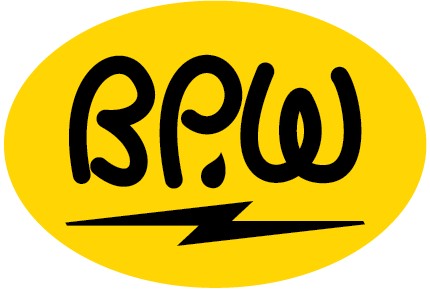Holland's primary source of power is Holland Energy Park, our combined cycle natural gas power plant.
Holland BPW generates, transmits and distributes electricity to approximately 30,000 customers within the City of Holland, Park Township, Holland Township, Laketown Township and Fillmore Township. Our electricity comes from a diverse portfolio of locally generated and externally purchased electric generation from a variety of sources including natural gas, coal and renewable sources.
Holland Energy Park (HEP) uses Combined Cycle Technology, increasing our facility’s efficiency over the typical combustion power plant. The exhaust gas from two 50 MW natural gas Combustion Turbine Generators (CTGs) flows into the plant’s two Heat Recovery Steam Generation (HRSG) units where heat from the exhaust converts water into steam. The steam then flows to a 45 MW steam turbine generator (STG) to create more electricity before it’s cooled back to a liquid in the condenser and cycled back to the HRSGs. This process increases the plant’s thermal efficiency to around 55% (above the average coal plant efficiency of 32-42%). In the winter, this efficiency increases further by utilizing the hot water from the condenser to supply the heat for the snowmelt system in downtown Holland.
Combined cycle technology employs a number of methods to squeeze the maximum amount of energy out of every natural gas particle. This includes recapturing waste heat whenever possible, putting it to use to create more electricity or to run our city’s snowmelt system.

1. HEP's two 50MW Combustion Turbine Generators (CTGs) draw in outside air, compress it and combust it with natural gas. The hot exhaust gas propels generator turbine blades, creating electricity.
2. Two Heat Recovery Steam Generators (HRSGs) then capture heat from the CTGs’ exhaust and use it to heat a closed loop of water into steam.
3. Pressurized steam from the HRSGs propels the 45MW Steam Turbine Generator (STG) blades to create additional electricity.
4. We step up electricity from the power plant from 13,800 volts to 138,000 volts for distribution to the community’s substations.
5. A continuous flow of cool water from the cooling towers condenses steam back to water after it exits the steam turbine.
6. Warm water from the condenser can divert out of our system to deliver waste heat to the city’s snowmelt system in colder months.
7. Cooling towers use evaporation to cool the closed loop of hot water from the condenser back into the same system.


